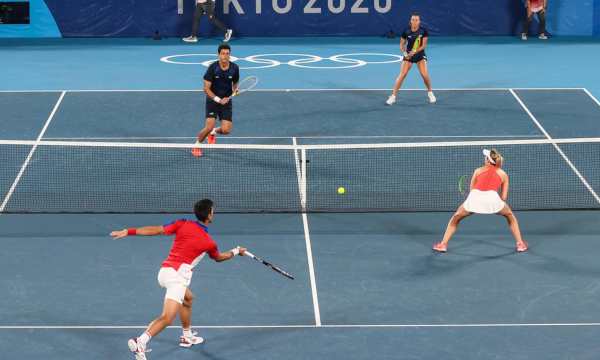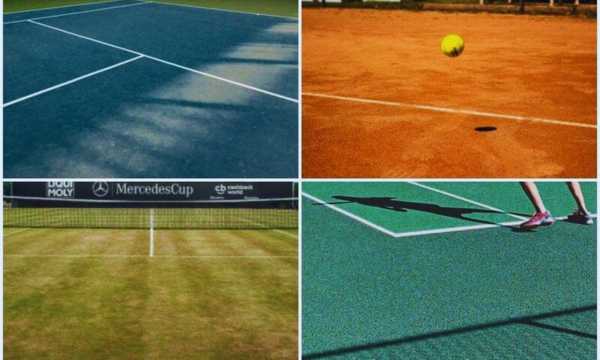Master Tennis Rules to Understand the Games
Tennis rules can seem complex at first glance, but mastering them will completely transform your experience with the sport.
Ad
Tournaments become more exciting when you understand every referee decision and every athlete’s move.
Tennis rules have evolved over decades to ensure fairness and dynamism in matches. Get ready to discover all the details that make this sport a worldwide passion.
Understand the Scoring: From 15 to Game, Set, and Match
The scoring methodology in tennis stands out as both distinctive and intriguing, forming a cornerstone of this elegant sport’s framework.
Score progression follows the sequence of 15, 30, 40, and then game completion—an approach rooted in timekeeping devices from 15th-century France.
When competitors both reach 40 points, they enter a “deuce” situation, where claiming victory requires securing two points in succession.
The player who wins the first post-deuce point earns an “advantage,” and capturing the subsequent point results in winning the game.
To secure a set, a player must triumph in six games while maintaining at least a two-game margin.
Should the score advance to 6-5, the player in the lead needs just one additional game to finalize the set at 7-5. When games reach equilibrium at 6-6, a tie-break mechanism typically determines the set’s outcome.
In most competitions, matches are determined by winning two out of three sets, with men’s Grand Slam tournaments standing as an exception by requiring victory in three out of five sets.
This structured approach to tennis scoring ensures that championships ultimately reward the athletes who demonstrate superior consistency throughout play.
Service Rules in Tennis
The serve is fundamental in tennis rules and requires precise technique to be executed correctly.
When serving, the player is required to stand beyond the baseline, maintaining a position in the area between the central marker and outer boundary line, ensuring no contact with any of these demarcated lines.
The movement must be continuous, without interruptions or double plays that deceive the opponent.
According to official rules, the ball must be tossed into the air with the hand before contact with the racket.
The player cannot touch the court with their feet before hitting the ball, resulting in a “foot fault” if this occurs. The serve must cross the net diagonally and land in the opposite service box.
Each player is entitled to two serves per point. If they miss the first (fault), they have a second chance. Two consecutive errors (double fault) result in the loss of the point.
If the ball touches the net and lands in the correct area, a “let” occurs, and the serve is repeated without penalties.
Players alternate sides after each game and switch sides on the court at every odd game sum (1, 3, 5, etc.). These rules ensure balance between environmental advantages like wind or sun.

Tennis-serving-position-(Source-Google)
Tie-Break Explained: The Decisive Game of the Set
The tie-break is a crucial element in modern tennis rules, created to avoid endless sets.
This special scoring system was officially introduced in 1970 by James Van Alen to add dynamism to matches. When the game score reaches 6-6, the tie-break begins instead of continuing until someone opens a two-game lead.
In the tie-break, the count changes to sequential numbers (1, 2, 3…) instead of the traditional 15, 30, 40.
The first player to reach seven points with at least a two-point lead wins the set. If the score reaches 6-6 in the tie-break, it continues until a player opens a two-point lead.
The first serve of the tie-break belongs to the player who would receive in the normal rotation system. After the first point, the serve sequence alternates every two points.
This peculiarity of the tennis rules requires special attention from players and referees.
Players switch sides of the court every six points played during the tie-break, maintaining condition balance. In some tournaments, including Wimbledon, there may be variations for the deciding set.
Understanding Lines and Challenges
Lines mark the boundaries of the court and are an integral part of the rules that determine whether a ball is in or out.
According to official tennis rules, the ball is considered “good” when any part of it touches the line, even minimally. This is one of the most important rules for referees and players to observe.
A professional tennis court measures 23.77 meters in length by 8.23 meters in width for singles matches. For doubles matches, the width increases to 10.97 meters, including the alleys. The baselines and sidelines delimit the valid playing area.
The electronic challenge system, known as “Hawk-Eye,” revolutionized the sport’s rules in major tournaments.
Players can contest line judge decisions, with three incorrect challenges per set, plus one additional if there is a tie-break. Successful challenges are not deducted from the quota.
Understanding the lines correctly can be decisive in crucial moments of matches. A ball millimetrically inside can mean the difference between victory and defeat in balanced matches.
Essential Net, Touch, and Obstruction Rules
A player loses the point immediately if they touch the net with any part of their body or equipment while the ball is in play. This rule maintains physical separation between opponents.
The tennis rules also determine that if the ball touches the net during a rally and passes to the other side, the game continues normally.
However, if this occurs during the serve, it is called a “let,” and the serve must be repeated without penalty.
A valid play requires that the player does not touch the ball twice consecutively with the racket.
Regarding obstructions, if a player intentionally hinders their opponent, they will lose the point according to official rules. Unintentional obstacles generally result in the point being replayed, at the referee’s discretion.
Invading the opponent’s space with the racket is allowed only if the ball has already crossed to their side.
Balls that hit permanent objects like posts, the ceiling, or the stands result in lost points for the player who hit them. These rules ensure clarity about situations that could generate controversies.
Specific Rules for Doubles
Doubles matches have specific rules that differentiate them from singles games.
The court is wider, including the side “alleys” that are out of bounds in singles games. This additional area creates new strategic dimensions for team play.
One of the most important tennis rules for doubles is the serve order, which must be declared at the beginning of each set and maintained throughout it.
Partners alternate receiving the serve, and they cannot change reception positions during a set. This organization structures the game and avoids confusion.
The serve must be executed alternately between the two players of the same team, following the established order. Violating this sequence can result in penalties.
Communication between partners is allowed throughout the game, unlike singles matches in some tournaments.
In mixed doubles, composed of one man and one woman, the man must serve against the opposing man and the woman against the opposing woman. This rule balances the natural physical differences between genders.

Mixed-doubles-(Source-Google)
The Referee’s Role in Common Decisions
The chair umpire is the highest authority on the court, responsible for announcing the score and making final decisions on controversial points. Their word prevails over any other opinion on the court.
The tennis rules establish a clear hierarchy among officials: the chair umpire coordinates the line judges, who signal when balls fall out of bounds.
In professional tournaments, there is also a supervisor who can be consulted in extremely controversial situations or to interpret complex rules.
Referees monitor time violations, allowing 25 seconds between points in major tournaments. Infractions result in warnings and subsequently in point losses according to current rules.
Unsportsmanlike behavior is also monitored, which can result in anything from warnings to disqualification.
On clay courts, only the chair umpire can come down to check ball marks. Players cannot erase marks to contest decisions, a serious violation that can result in penalties.
Special Situations and Lesser-Known Rules
There are rules for unusual situations that rarely occur but are important for a complete understanding of the game.
If a ball breaks during a point, the referee will analyze whether this significantly affected the point and may decide to replay it. This is a rare scenario but provided for in the tennis rules.
According to official rules, if a foreign object enters the court (such as a ball from another match), the point must be replayed, regardless of who was in advantage.
The same applies to significant external interferences during a point.
A curious rule states that if the racket escapes from the player’s hand during a legitimate play and the ball is returned correctly, the point is valid.
For players with physical limitations, there are adaptations in the rules that allow two bounces for wheelchair players and other modifications that ensure inclusion.
These variations promote accessibility without compromising the competitive essence of the sport.
Final Considerations
Mastering tennis rules is essential for any fan who wants to fully appreciate this elegant and strategic sport.
From the unique scoring system to the technical nuances of the serve, each aspect is designed to ensure fair and exciting competitions.
The electronic challenge system and other technological innovations demonstrate how the rules continue to adapt to modern times without losing their essence.
Whether you are a casual player, a dedicated fan, or an aspiring professional, this knowledge of the rules will provide you with a new dimension of appreciation for the sport.
FAQ
Can I receive the serve inside the baseline?
What is an “ace” in tennis?
Is it allowed to serve underhand in professional tennis?
How many challenges can a player make during a match?
How do the rules work in case of rain or interruptions?
 Tennis Courts: Understand the Advantage of Each Surface
Tennis Courts: Understand the Advantage of Each Surface
Believe it, tennis courts can completely transform your game! Keep reading! Ad Have you noticed how the same match can feel completely different depending on where […]
Keep reading Top Apps to Watch Tennis Live on Android and iPhone
Top Apps to Watch Tennis Live on Android and iPhone
Watching tennis live on a phone has never felt so smooth, and the last month brought meaningful upgrades that make it even better. Ad With refined […]
Keep reading Learn How to Improve Your Tennis Serves with These Tips!
Learn How to Improve Your Tennis Serves with These Tips!
A reliable tennis serve multiplies your options on every point. It sets the tone, opens angles, and keeps opponents guessing. Ad Today, modern insights go beyond […]
Keep reading